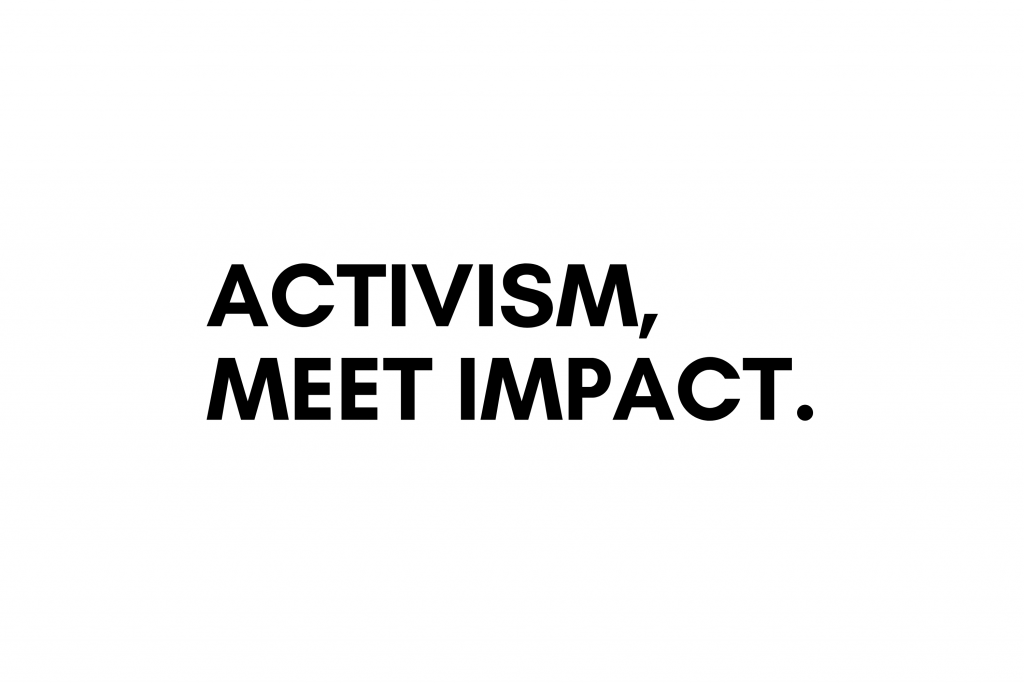I first started pondering this question over a year ago– when I was living in Guatemala City. As a volunteer on the Monitoring and Evaluation Team at International Justice Mission, my main responsibility was to capture narratives of impact in the lives of those that IJM has worked with. Impact, in this situation, was significant and positive change in someone’s life that happened as a result of IJM’s staff and their work. This impact was qualitative, narrative and powerful. social impact examples
When I came back to the US, I remembered how I recognized and measured impact. But I also asked myself what my impact was. How do I know that my efforts are making a lasting impact?
I created Novel Hand to learn how I can make a sustainable and equitable impact in my community and in the world. But what is impact?
A simple definition of impact
Merriam-Webster defines impact as, “the force of impression of one thing on another : a significant or major effect.”
This is a pretty vague definition, but it’s a good place to start. From this definition, we know that impact requires action on one part to create an impression on another. Impact has a cause and an effect– and that effect is significant or major.
By this definition, lots of things are impactful. Giving someone your lunch is impactful– it creates an impression on the beneficiary of your lunch and probably has a significant effect on their day.
But I’m not satisfied with just making someone’s day. I want my impact to be lasting and worthwhile. My guess is that none of us are content with our actions and impact if they are temporary.
This dictionary definition is simple, but abstract. How can we define impact in a way that is easier to conceptualize?
A less simple definition
In the world of humanitarianism and social impact, there are many definitions of impact. Here’s one way to define it.
Methods Lab, an action-learning collaboration between the Overseas Development Institute (ODI), BetterEvaluation (BE) and the Australian Department of Foreign Affairs and Trade (DFAT), highlights the multi-dimensional nature of impact. In the international development realm specifically, impact is important because the measurement and understanding of impact influences the design, management and evaluation of programs and interventions. Basically, how you define impact influences how you create that impact.
Methods Lab defines impact according to six criteria:
- Application: Impact can be applied prospectively (What will happen as a result of this action?) or retrospectively (What measured or observed effects are there?).
- Scope: Specific variables or broad changes
- Subject and Level of Change: Individuals, institutions, groups, etc.
- Degrees of Separation between the intervention or program and the beneficiary
- Immediacy, Rate, and Durability of Change: How long will it take to recognize change?
- Homogeneity of Benefits: Does it affect the population on average or does if affect different groups within the population?
Let’s apply these six criteria to a program that distributes mosquito nets, such as the Against Malaria Foundation.
Prospectively, this intervention seeks to prevent people from contracting malaria. Viewed retrospectively, the impact of the nets might be measured by how many people have not died of malaria as a result of using the nets.
Every 100-1,000 nets we put over heads and beds, one child doesn’t die.
Against Malaria Foundation
The impact of mosquito nets is measured using specific variables, such as how many people the nets protect. AMF states that, “Every 100-1,000 nets we put over heads and beds, one child doesn’t die.” The level of change is individual, and there are few degrees of separation between the program (Against Malaria Foundation) and the beneficiary (an individual in a country with high rates of malaria transmission via mosquitoes).
The impact of mosquito nets is immediate in preventing the contraction of malaria, but with lasting implications for health, ability to work, and other parts of one’s life. Lastly, mosquito nets would be expected to benefit all who use them.
Next, let’s apply these criteria to a malaria vaccine pilot program directed by the World Health Organization.
The WHO has dozens of programs all over the world. One of these programs is the Malaria Vaccine Implementation Programme (MVIP). The MVIP is a pilot program testing a malaria vaccine and is currently in phase 4 of clinical trials.
The impact of this program can be judged prospectively– how many lives will be saved? — and retrospectively– how many fewer children will die as a result of the development of this vaccine? The scope of this vaccine development is similarly narrow, focusing on the specific health outcome of preventing the contraction of malaria.
Developing and testing a vaccine for malaria has individual impact, but it will also change how entire countries and health systems combat malaria. It’s both a broad and individual impact. There is a somewhat direct link from the pharmaceutical firm that developed the vaccine and the WHO to the beneficiary. However, it takes longer to recognize change– the vaccine has been in development for 30 years, while mosquito nets can be produced and distributed in weeks and days. Lastly, a vaccine will benefit children once they receive multiple doses of the vaccine– in contrast to mosquito nets, which can benefit anyone who uses them regularly. And so far, this vaccine has been called “suboptimal” by vaccine researchers.
Both mosquito nets and vaccines have relatively direct impact, benefiting individuals by preventing the contraction of malaria. However, they differ significantly in terms of their cost and longevity. Other programs with humanitarian purposes are much less direct. For example, an institutional capacity-building program conducted in a hospital will have less direct and more systemic impact.
So that’s a little more complex than “a significant or major effect.” Clearly, both mosquito nets and a malaria vaccine could have a major effect on rates of malarial contraction. But how do we know which is more effective? Which has the greatest impact?
A working definition
Over the next few months, I’ll be exploring impact more deeply– how it’s defined, measured, and created. I don’t know if I’ll come to a more clear definition of impact. However, I hope to find a working definition of impact to guide both how I use my time and resources and how Novel Hand defines and explores impact.

- College Football, Ariana Grande, and Water - September 3, 2023
- Livestock and Land Use: How Are We Feeding The Planet? Impactfull April 2022 - April 19, 2022
- What Does Voluntourism Look Like? A Case Study in a Cambodian Orphanage - March 28, 2022
